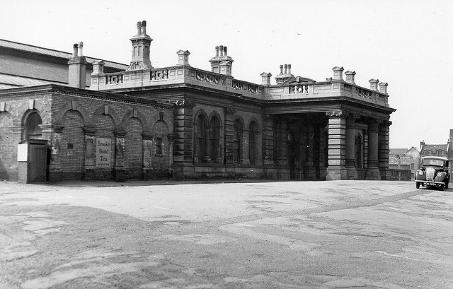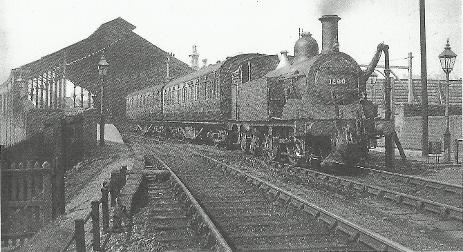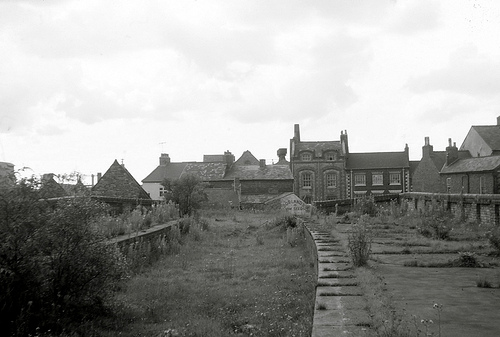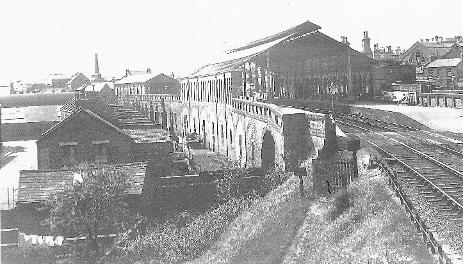

The photo left (1939) gives a
view of St. Johns Street showing the unique structure of the Midland
station with its warehouses in the arches below. Behind the station is
the carriage shed where the lines terminated.
The row of terraced houses front onto Victoria Gardens with the nearest arch giving access through to Guildhall Road.
Today the arches have gone and the land used for housing but some Terraced houses still remain.

The Midland Railway had been using the LNWR's Wellingborough to Northampton Bridge Street line from 1866 because it had gained running rights over it.
They couldn't use the LNWR's Bridge Street station so they had to build their own temporary station alongside that line. It opened (south of the River Nene) on the line towards Bridge Street in 1866 then closed in 1872 when the Midland Railway built their own new route into the town from Bedford and with it their 'second' station about half a mile closer to the town centre and called it St. Johns Street Station.
St. Johns Street Station opened as a replacement station on the same day, which served both lines and was built on a plot of land within the grounds of the former St. John's Priory near the centre of Northampton. St John's Street Station was the third station opened in Northampton situated at the bottom of Guildhall Road and handy for the town centre.

The station was a large elegant building of a light sandy-coloured limestone was constructed above street levelon red brick arches with retaining walls which carried the line above Cattle Market Road as it meandered southwards past Northampton Cattle Market and then across the River Nene.
An imposing train shed covered the central part of the two platforms.
No passenger footbridge was provided, and so passengers crossed the line using a barrow crossing or a footpath going behind the signal box located on the down side of the line just beyond Cattle Market Road bridge.
The station did not see any freight services as these were run to the Midland's separate goods station located near Bridge Street station.
In 1923, the Midland Railway became part of the London, Midland and Scottish Railway and in July 1939 it was decided to close St. John's as a
cost-cutting measure and divert services to Bridge Street before going onto Castle Station.
The intermediate stations closed to passengers in 1962, but the line remained open to serve the Ministry of Defence's store in Piddington, the Ministry itself administering the line from 1968 until 1981.
The line had also been used to supply coal to Northampton Power Station between Northampton and Brackmills until the power station closed in 1975. Most of the track on this section of the line had been lifted by 1986, but a small section between Northampton and the Brackmills Industrial Estate remained down to serve the rail plant manufacturer Geismar, the last customer for this line. The site at Brackmills, a yard which had been in railway use since 1888 was used until 1994 for the assembly and distribution of track panels, but became redundant with the advent of welded track.
